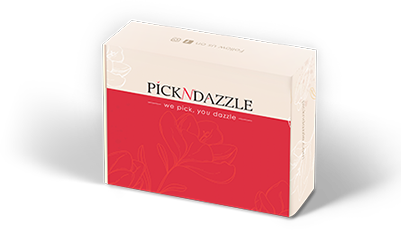When I was a little girl, I would spend absolute ages in the water, whenever we'd go to the beach. After about an hour my mum would rush up to me and try to get me to come out, yakking about sunburn and skin cancer.
Then she'd commence to apply SPF lotion on my back, arms and face and I hated the thick, white marks it would leave. It was virtually impossible to rub it all in and forget about it. You had to wait around for ages and make sure you don't get it all over your towels or your swimming suit!
Luckily, a lot has changed since then! - I'm a grown up woman who can stay in the water for as long as she wants! But no, I won't talk about that today.
So I wanted to find out when sunscreens became invisible and when they came about at all and which one of our Pick N Dazzle products is best for you? It turns out, there is a lot to know about when, where, which one and for who! So keep reading. Knowledge is power!
Different forms of sunscreen date all the day back to antiquity.
The Greek civilisation was famed for using olive oil, which was probably a physical sunscreen (reflected the light away), and the Egyptians used a more sophisticated method, probably an early version of a chemical sunscreen (absorbed and neutralised harmful UV rays) made or rice wax, lupin seeds, jasmin.
According to Craddock's book 2000 years of Zinc and Brass (1998), published by the British Museum, there is evidence to support that even zinc oxide, which is a modern ingredient in many sunscreens today, was used in the form of paste by ancient people to prevent the damage of sun exposure.
The first synthetic sunscreens hit the shelves in the late 20s of the 20th century. It took nearly another 30 years to produce the first sunscreen that was thought to be truly effective and another 40 until the SPF measurement and water-resistant sunscreens were invented.
The development of nanotechnology in the new millennia made it possible for the particles that made up sunscreens to be made much smaller and a lot more effective, thus providing greater protection and eliminating those unattractive thick, chalky white stains that its predecessors left.
What has really revolutionised the field is our ability to better understand exactly what is it we're up against. Knowledge truly is power!
There's two types of UV rays that reach the Earth – UVB and UVA. It is the shorter UVB rays that cause sunburn. The SPF coefficient is a measurement that estimates the amount of UVB rays that reach your skin.
According to the magazine Scientific American, SPF 10 means that 10 out of 100 photons will reach your skin; SPF 20 means that 5 out 100 photons will reach your skin. You get the drift, the higher the SPF, the less UVB get the chance to get through and damage your skin.
What about the UVA rays, you ask. Well this is where it gets tricky. Even thought UVA rays don't cause sunburn, they often have more serious and lasting negative effects on your skin. They're longer so they access the deeper layers of your skin where their effects have been associated with the formation of malignant melanomas and significant DNA damage.
They're the silent, invisible enemy that most sunscreens are ill-equipped to handle. To ensure that you're well protected against both types of UV, you must resort to using only broad-spectrum sunscreens. They are specifically designed to provide protection from both. Most common sunscreens don't offer that, so make sure to read the label before you buy. Broad-spectrum products will normally contain zinc oxide, titanium dioxide, oxybenzone or avobenzone, all effective in blocking UVA rays
Now this might be obvious but it's so important that I'd run the risk of being 'lame' and repeating it: don't leave the house without some form of SPF on your face! Even on cloudy days, a significant amount of UV rays reach the Earth and your skin.
The SPF factor of your choice will depend on your activities that day – SPF 15 blocks 93% of UVB radiation; SPF 30 blocks nearly 97% and SPF 50 – 98%. Scientists warn that no sunscreen provides 100% protection but there's a few things you can do to make the most out of your SPF:
- Be generous when you apply, it will pay off! The recommended dosage is two milligrams of sunscreen per square centimetre of skin.
- Apply 30 minutes before exposure
- Keep reapplying every two hours.
Our sun-protecting brand of choice Sol Leon offer a number of SPF creams, ranging from medium to high and very high protection, respectively SPF 20, SPF 30 and SPF 50+. Their active ingredients include a number of UV filtering organic compounds such as homosalate; organic compounds absorbing both UBV and UVA rays that protect the skin from direct DNA damage; and avobenzone, which absorbs the full spectrum of UVA rays and ensures your skin is safe from them.

For more skincare product suggestions, create your beauty profile! Tell us what are your skin's unique idiosyncrasies and we'll make sure to find products, perfectly suited to it!




